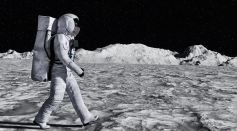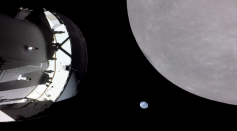SPACE

ESA Unveils 1st Parastronaut to Boost Space Diversity: Who is John McFall?

Hubble Space Telescope Captures Glowing Ring of Stars From a Pair of Entwined Galaxies

NASA’s Artemis 1 Orion Rocket Silently Scares Astronauts for Almost 50 Minutes

After Accusing of Seizing Rocket Debris, Chinese Coast Guard Forcefully Takes the Remains From Philippine Navy in South China Sea

NASA’s Artemis 1 Rocket Door Blows After Damaging Launch Pad

Enormous Yet Peculiar Cosmic Filaments Found Outside the Milky Way Galaxy [Look]

Could Humans Live on the Moon? NASA Believes People Would Be Living on the Lunar Surface by 2030

JAXA Confirms Losing Contact With CubeSat After Being Released by NASA's Artemis I

ESA Aims To Harvest Solar Energy From Space 24/7 Through Solaris

NASA's Artemis I Performs Lunar Flyby on the Sixth Day of Its Mission, Passing by Apollo Landing Sites

Meteorites Detected in Canada Hours After the Discovery of a Small Asteroid

Winchcombe Meteorite Says Earth's Water Probably Came From Outer Space [Study]

Andromeda Galaxy Shows Signs of Cannibalism, Showing Galaxies Grow by Eating Smaller Systems

New Interactive Map of the Universe Allows People To Scroll Through the Cosmos to the 'Edge of What Can Be Seen'
Most Popular

Largest Known Volcanic Aquifer Discovered Beneath Oregon's Cascades

New 'Supergiant' Sea Bug Found in South China Sea, Named After Darth Vader

Mediterranean Sea Was Refilled by a Catastrophic Flood Millions of Years Ago

Mysterious Cosmic Waves That Sound Like Birds Detected in Unexpected Space Region





